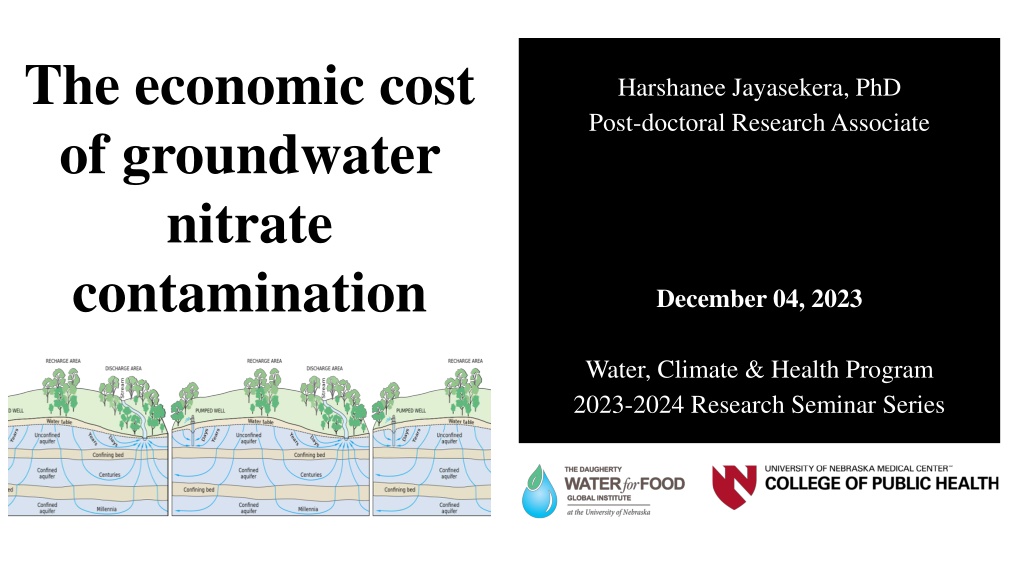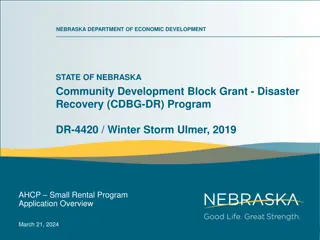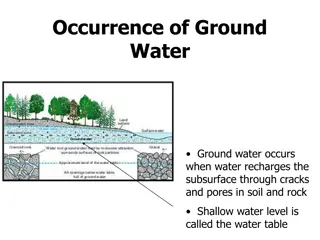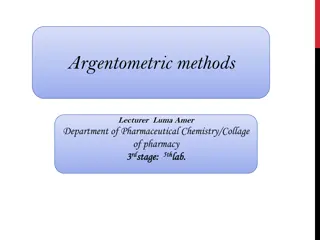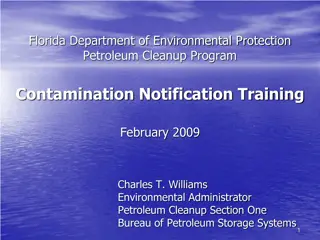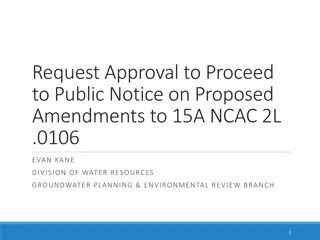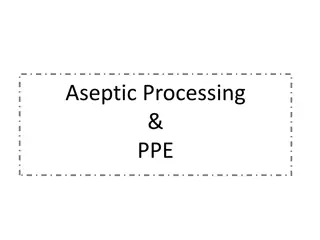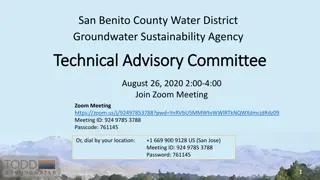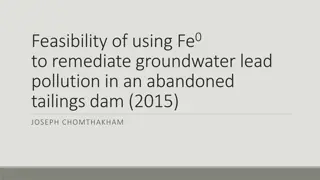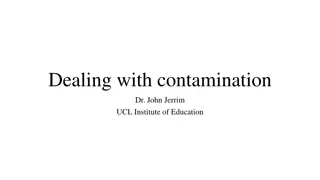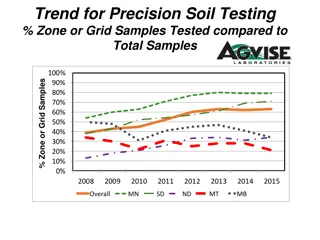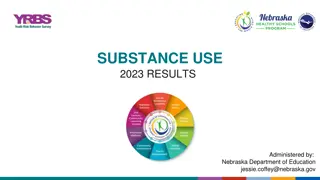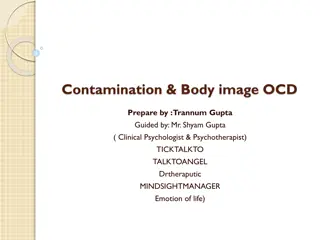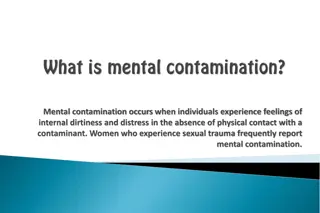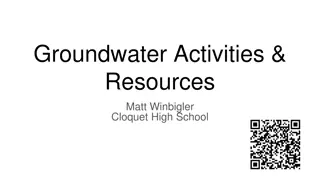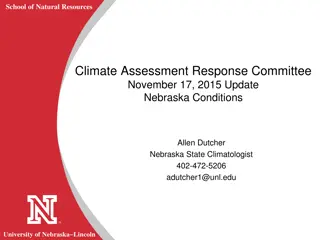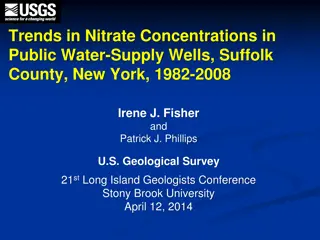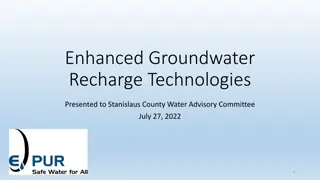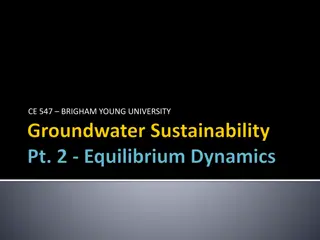Understanding the Economic and Health Impacts of Groundwater Nitrate Contamination in Nebraska
The economic and health costs of groundwater nitrate contamination in Nebraska highlight the challenges of ensuring safe drinking water. Despite largely safe levels, proactive strategies are essential due to rising nitrate levels and costly maintenance efforts. The compliance record shows progress in recent years, but caution is needed to avoid triggers for enforcement actions. Community and private wells both face challenges in maintaining safe nitrate levels, emphasizing the importance of proactive water quality improvement measures.
Download Presentation

Please find below an Image/Link to download the presentation.
The content on the website is provided AS IS for your information and personal use only. It may not be sold, licensed, or shared on other websites without obtaining consent from the author. Download presentation by click this link. If you encounter any issues during the download, it is possible that the publisher has removed the file from their server.
E N D
Presentation Transcript
The economic cost of groundwater nitrate contamination Harshanee Jayasekera, PhD Post-doctoral Research Associate December 04, 2023 Water, Climate & Health Program 2023-2024 Research Seminar Series
The health and economic cost of groundwater nitrate contamination in Nebraska Avoided costs of impaired water quality Cost of maintaining current water quality Quantifying the value of clean drinking water
Key points Nebraska s drinking water is largely safe Ensuring safe drinking water is costly Proactive water quality improvement strategies have positive results
Approach Irrigation wells State of Nebraska groundwater NE Nitrate levels Public wells community water system wells Private (domestic) wells
Drinking water nitrate levels Community water system wells Nebraska s drinking water is largely safe Over the last 25 years average nitrate levels have increased by about 2 mg/L Ensuring safe drinking water is costly Proactive water quality improvement strategies have positive results
Drinking water compliance record Nebraska s drinking water is largely safe Caution! One compliance violation can trigger multiple enforcement actions Ensuring safe drinking water is costly In recent years, NE community water systems have become more compliant Proactive water quality improvement strategies have positive results
Drinking water nitrate levels Private (domestic) wells Nebraska s drinking water is largely safe Average nitrate levels in private (domestic) wells are closer to 10mg/L Ensuring safe drinking water is costly Proactive water quality improvement strategies have positive results
Drinking water nitrate levels Nebraska s drinking water is largely safe On average, Nebraska s drinking water is safe Ensuring safe drinking water is costly Proactive water quality improvement strategies have positive results However, there are notable exceptions
Cost of ensuring safe drinking water Current nitrate levels are affected by past management actions Water blending nitrate Nebraska s drinking water is largely safe Ensuring safe drinking water is costly High Proactive water quality improvement strategies have positive results Lower average nitrate Water purchasing Low nitrate
Cost of ensuring safe drinking water Nebraska s drinking water is largely safe Moving wellfields Ensuring safe drinking water is costly New infrastructure costs Proactive water quality improvement strategies have positive results New pipeline connections Other costs e.g. easement of land
Cost of ensuring safe drinking water Well drilling and decommissioning costs Nebraska s drinking water is largely safe Ensuring safe drinking water is costly Proactive water quality improvement strategies have positive results
Cost of ensuring safe drinking water Water purification Nebraska s drinking water is largely safe Treatment status NE of community water systems Size (Population) Is water being treated? No <= 500 302 (87.79%) 501 3,300 110 (63.95%) 3,301 10,000 10 (35.71%) 10001 100,000 5 (41.67%) >= 100,001 0 (0.00%) Ensuring safe drinking water is costly Total (water systems) Yes Proactive water quality improvement strategies have positive results 42 (12.21%) 62 (36.05%) 18 (64.29%) 7 (58.83%) 2 (100.00%) 344 172 28 12 2 Notes Water systems by the size of the population it serves, and indication if any of the facilities (e.g. well, collection center etc.) in the water system is being treated (for any contaminant not necessarily for nitrate). Source EPA Safe Drinking Water Information System
Cost of ensuring safe drinking water Nebraska s drinking water is largely safe Purification costs (Tang et. al, 2018) Ensuring safe drinking water is costly Proactive water quality improvement strategies have positive results Reverse Osmosis (RO) $0.22 - $4.6(USD 2010/ 000 gallons) Ion Exchange (IX) $0.69 - $19.16 (USD 2010 / 000 gallons) Per capita water use/year 29,930 gallons (US EPA)
Cost of ensuring safe drinking water Nebraska s drinking water is largely safe Water quality management is expensive Ensuring safe drinking water is costly Possibly larger financial burdens on smaller community water systems and rural households Proactive water quality improvement strategies have positive results
Water quality protection works Nebraska s drinking water is largely safe Wellhead protection areas have managed to reduce source water contamination Ensuring safe drinking water is costly Proactive water quality improvement strategies have positive results
Water quality protection Almost all the NE community water system wellfields are in WPAs Nebraska s drinking water is largely safe Ensuring safe drinking water is costly Additional protections will likely be successful Proactive water quality improvement strategies have positive results
Re: Key points Nebraska s drinking water is largely safe Ensuring safe drinking water is costly Proactive water quality improvement strategies have positive results
Project-related products Thank you! Health and economic impact analysis of nitrate pollution in Nebraska's groundwater Contact: djayasekera@nebraska.edu Nitrate management in Nebraska community water systems is a complex issue: A short article analyzing nitrate trends in Nebraska community water systems Nitrate Contamination in Drinking Water: An article, published in The Actuary magazine, that provides an overview of potential pollution causes and adverse health outcomes linked to nitrate contamination This work was supported by the Water, Climate and Health Program, UNMC College of Public Health project, Health and Economic Impact Analysis of Nitrate Contamination of Groundwater in Nebraska, and the Daugherty Water for Food Global Institute at the University of Nebraska. Value of water quality: A recorded Nebraska Water Center seminar presentation on the economic costs of nitrate contamination in Nebraska s groundwater
